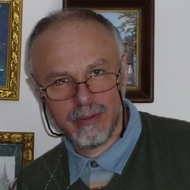Demography and Social Policy: First Readings in Memory of A.G. Vishnevsky Held at HSE University

The Human Capital Multidisciplinary Research Center, together with the Vishnevsky Institute of Demography and the International Laboratory for Population and Health, organized the first demographic readings in memory of HSE University Professor Anatoly Vishnevsky, the first director of the Institute. The experts in attendance discussed a wide range of topics, including family policy, how to improve the conditions of low-income people, and how to correct market and employment setbacks.
In Memory of Anatoly Vishnevsky
Mikhail Denisenko, Director of the Vishnevsky Institute of Demography at HSE University, opened the reading with a tribute to Anatoly Vishnevsky, calling him an outstanding scholar, a researcher with diverse interests, and a brilliant writer. In his writing, he was very much at home among historians and sociologists. ‘No one could have predicted the sad events of 2021, when outstanding researchers left us,’ said Mikhail Denisenko. He added that the World-Class Research Center (WCRC) plans to resume the publication of the Population and Society Bulletin.

Mikhail Denisenko
Prof. Lilia Ovcharova, HSE Vice Rector, Director of the HSE Institute for Social Policy (ISP) and founder of the WCRC, called Anatoly Vishnevsky a globally renowned scholar and a very civic-minded person.
He always recognized opportunities and said that we should know how to use them. We’ll make sure that his followers and students put his plans into practice
She noted that Anatoly Vishnevsky was an excellent negotiator capable of communicating with officials and politicians.
Sergey Zakharov, Deputy Director of the Institute of Demography, spoke about the main milestones in the life and research career of the outstanding demographer, his role in the development of national demography, and the creation of a specialized scientific school. He reminded the audience of Anatoly Vishnevsky's major works and his role in establishing international cooperation between demographers in Russia and other countries. ‘His journey was long and difficult. He lived a distinguished life and remains fondly remembered, and he edited and wrote very well until his final days,’ said Sergey Zakharov.
Non-identical Twins
Prof. Ovcharova presented her report on ‘Family Policy in Contemporary Russia.’ She said that Anatoly Vishnevsky considered demographic and family policies to be non-identical twin sisters. Demographers and social economists alike study marriages and family planning. The impact of social policy on people’s quality of life and well-being has become an important research topic, and there are many misconceptions and myths in the field. In the 2000s, many support measures were deemed successful, but Professor Vishnevsky noted that demographic indicators would have improved with any amount of social support. People’s reproductive intentions are difficult to regulate—it is important to understand and assess the possible effects of deferred births, but in the absence of a suitable reserve, no measures to stimulate fertility will be successful.

Prof. Lilia Ovcharova
The HSE vice rector said that Russia had returned to its Soviet-era income level by 2006, after a twofold decline in the 1990s. This recovery reassured the population and had a positive effect on the birth rate. Since 2013, however, there has been income stagnation, and reproductive intentions have declined. Russia has a high and consistent level of income inequality, particularly wealth inequality. The previously high expectations associated with income from real estate and entrepreneurial activities have declined in recent years. Countries provide social support to mitigate high levels of inequality caused by wage and regional disparities.
Lilia Ovcharova spoke about the population’s income structure.
The share of social payments has recently exceeded the Soviet level: in 2019, it was 19.1% (exceeding 1985 figures by 2.7 p.p.) and reached 20.8% in 2020.
However, social payments are unlikely to correct market and employment failures in the long term
Supportive measures for families with children cannot change the issue of low incomes. The problem must be addressed through the standards of the salary system, because currently, about 30% of workers earn less than two minimum monthly wages.
Professor Ovcharova said that the increasing need for elderly care is one of the most important areas of social policy. This need is caused by longer life expectancies and the growing elderly population. Only 1.5 million out of the 4 million people in need of care receive support from social protection agencies. In Prof. Ovcharova’s opinion, both inpatient care and assisted living at home should be developed.
A complicated issue at the intersection of demographic and social policy is the likelihood of increased birth rates in the under-24 age group. This involves studying at university and raising children at the same time. The postponement of having children until later in life is an option that requires investment in reproductive health. ‘I shared the topics we discussed with Anatoly Vishnevsky. His students will help us move forward in exploring these topics,’ summarized Lilia Ovcharova.
Living like the Finnish
Professor Mark Toltz of the Hebrew University of Jerusalem presented a report on ‘The Russian Roots of Demographic Transition Theory,’ in which he discussed the scientific work of the Russian emigrant scholar Alexander Kulischer. Prof. Toltz noted that Anatoly Vishnevsky had translated a number of Kulischer’s articles and reviews from French and published them. Notable examples include his arguments about demographic transition—the initial growth of the population due to an increased decline in mortality and the subsequent sharp decline in the birth rate. According to Alexander Kulischer's assessment, this trend emerged in Western Europe and was not evident in the 1930s.

Vladimir Shkolnikov
Vladimir Shkolnikov, Academic Supervisor of the International Laboratory on Population and Health (ILPH) (HSE University) and Supervisor of the Laboratory at the Max Planck Institute for Demographic Research (Germany), presented a report on ‘Population Losses in Russia Due to the 40-Year Mortality Regression’ prepared jointly with Evgeny Andreev, Head of ILPH. According to the published data, the average life expectancy of men in Soviet Russia in 1964 was 64.9 years. It then fluctuated between 65 in 1986 to 58 in 1994, only managing to exceed the Khrushchev period in 2013. The life expectancy of women in Soviet Russia increased slightly between 1964 and 1990 (72.5 years and 74.3 years, respectively) before falling to 71 and returning to the Khrushchev-era level in 2005. The life expectancy of men in Finland increased to 78 between 1964 and 2013, and to 82 for women by 2005. If the decline in mortality hadn’t halted, there could have been 8.2 million more people in Russia in 1991, 18.2 million more in 2005, and 23.2 million more in 2018. According to the authors of the study, the increase in the number of men would have been significantly greater than that of women (14.6 and 8.6 million in 2018).
A number of other reports were presented on the first day of the readings:
‘The Demographic System and its External Environment in the 21st Century: Understanding Turbulence at Its Junctions’ by Professor Mikhail Klupt of St. Petersburg State University of Economics;
‘All-Russian Population Census 2021’ by Svetlana Nikitina, Head of the Department of Population and Health Statistics at the Federal State Statistics Service, Associate Professor at the Vishnevsky Institute of Demography (HSE University);
‘Epidemiological Transition: Changes in Causes and Age of Death’ by Inna Danilova, Research Fellow of the ILPH, and Vladimir Shkolnikov;
‘Health, Mortality, and Rate of Aging: Some Empirical Findings from Research in Russia’ by Prof. David Leon, London School of Hygiene & Tropical Medicine and Chief Research Fellow at the ILPH (HSE University);
‘What Do We Know about Socioeconomic Inequality and Mortality in Eastern Europe?’ by Domantas Jasilionis, Max Planck Institute for Demographic Research (Germany);
‘Mortality as a Function of Survival’ by James Vaupel, University of Southern Denmark;
‘A Theory of Sanitary Transition in the Face of Environmental and Biological Change’ by France Meslé and Jacques Vallin, French National Institute for Demographic Studies;
‘The Challenge of Population Growth’ by John Wilmot, UN Population Division.
Inna Danilova
David Andrew Leon
Никитина Светлана Юрьевна
See also:
'Motivation for Pursuing Big Goals in Life': What is Taught in 'Population and Development' Master's Programme
In 2023, the Master's Programme 'Population and Development' was ranked among the top educational programmes at HSE University. The HSE News Service explains what makes this programme special, and why specialists in population issues should study Python, housing policy, and public administration.
Elderly People, Crisis, and Robots
Across the globe, countries are witnessing dramatic shifts in the relative proportions of younger and older generations in their demographic makeup. Even in African states, signs of an emerging demographic decline are becoming evident. By 2050, two thirds of people aged 65 and over will be living in low- and middle-income countries. While an ageing population poses a significant challenge to national economies, it can also serve as an impetus for development, especially in the realm of technology. What is the extent of global population ageing, what challenges arise in this context, and whether humanity is capable of addressing them are some of the key questions, explored by IQ.HSE, based on a paper published in Sociological Journal by Leonid Grinin, Anton Grinin, and Andrey Korotayev at the HSE Centre for Stability and Risk Analysis.
Search Query: How to Study Migration with Google Trends
Experts have calculated that the number of international students in Russia has grown six times over the last decade, and researchers say that many of those who are studying today would like to stay in the country. This, alongside issues such as why Google Trends are worth looking into, were covered at the HSE XXIV Yasin International Academic Conference on Economic and Social Development section on demography and labour markets.
Long-awaited Long-term Care
The number of older persons and their life expectancy are on the rise in many countries worldwide. As they age, some people need assistance with daily living activities, something their family is not always capable of providing. This creates a demand for professional long-term care that integrates medical and social services. How Russia can benefit from other countries' experience of providing public long-term care is discussed in a report* presented by the HSE Centre for Social Policy Studies at the XXIII Yasin International Academic Conference on Economic and Social Development hosted by the HSE University.
Where the Babies are Booming: Which Russian Regions Have the Highest Birthrates?
The birthrate across Russia is not uniform: in some areas, people have children earlier in life, and in some, later. These contrasts reflect various populations’ differing demographic outlooks and the dynamics of their respective regions, as well as the extent to which their residents adhere to traditional norms of reproductive behaviour. On the whole, almost no large areas with high birthrates remain in Russia. Here, IQ.HSE studies current trends based on an article by demographer Artur Petrosyan.
Deadly Habits: Why Women Live Longer Than Men
In developing countries, the gap in life expectancies between men and women has been shrinking for a long time—but it has not disappeared completely. In many cases, gender-related differences in mortality in the 45–69 age group account for almost half of this gap. However, in Eastern Europe, early mortality in men aged 50 and under accounts for over a third of it. Demographer Marina Vergeles examined the situation in more than 40 countries and shared her conclusions with IQ.HSE.
Think Before You Drink: Why Women Live Longer Than Men
Women are more likely to live to old age because they are less prone to indulge in bad habits than men. A whole range of social, biological and other factors—such as women being more likely to visit the doctor and exercise—also play an important role. Experts from HSE University and RANEPA analyzed the effects of various factors on the reduction in men's life expectancy, which varies based on habits and ideas about male behavior in different countries.
Shrinking Vorkuta: Depopulation and Decline of Russian Arctic Cities
In Soviet times, relocation to northern monocities was seen as an attractive option, with high pay and good perks, along with a well-developed infrastructure, perceived as offsetting the harsh climate. The situation is different today, with some cities on the verge of vanishing into extinction. A prominent and rather striking example of this process is Vorkuta in the Komi Republic. A team of researchers from the HSE and Politecnico di Milano, having examined the progressive shrinkage of this once booming monocity, concluded that the case of Vorkuta could suggest effective approaches to managing urban depopulation in the Russian Arctic.
Planning for Babies: How Many Children Russian Families Would Like to Have
Over the past quarter-century, the socially accepted reproductive norm has hardly changed in Russia: most people still believe that two children per family is the ideal. The reality, however, is more diverse, and both largeand childfree families are increasingly commonplace. A new study by HSE demographers looks at changes in public opinion in Russia between 1995 and 2019 concerning the optimal number of children in the family.
Children of Perestroika Turned out to Be Tougher than Children of the Sixties
Due to the COVID-19 pandemic, people around the world have faced an unprecedented crisis. The cataclysm has impacted Russia as well. Who will better deal the hardships—experienced baby boomers, Gen Xers who survived the 1990s, or Gen Yers who have had an easy life?


